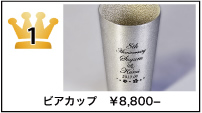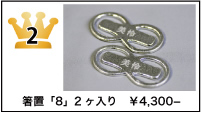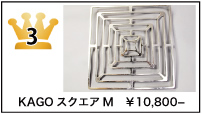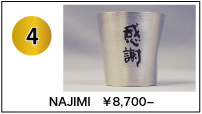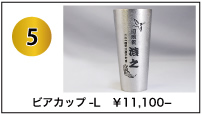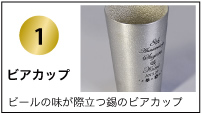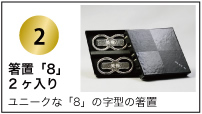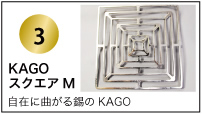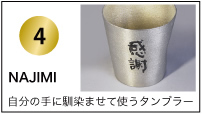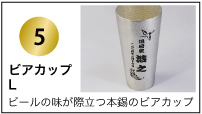未分類 一覧
ビアカップをお求めなら能作|ビアカップのススメ
Inside knowledge Scientists can now turn a skin cell into a heart muscle cell and mapping the complex processes that make that possible is bringing us another step closer to a new world of medical therapies. An elite group of cell biologists has potentially opened a new chapter for medicine, drug development and biomedical engineering by learning how to switch the identity and function of cells obtained from the human body. In a handful of laboratories around the world two of which shared the 2012 nobel prize in physiology or medicine they are pioneering experiments in”Cell reprogramming”. This amounts to the ability to take human cells such as skin and, for example, turn them into light sensitive nerve cells like those in the eye’s retina, or beating heart muscle cells, or any other tissue of the kind that degenerates and which the body cannot replace, or which researchers cannot readily study. Such cells could be used to better understand diseases, to test new drugs or eventually to provide fresh cells to transplant back into the body, although researchers stress this is still highly speculative.While this process has a potential similar to that offered by embryonic stem cells, it bypasses the ethical issues because the cells can be acquired without destroying embryos. These are early days, but scientists such as dr jose polo at the australian regenerative medicine institute and the department of anatomy and developmental biology at monash university say we could be witnessing the birth of a potent new cell based biotechnology based on manipulating the identity of the body’s 200 different types of cells. However, this technical development was achieved before scientists actually understood why it was possible for a specialised cell such as a skin cell to backtrack into a more embryonic form so it could then develop along a different biological pathway as a muscle cell, for example. Scientists expected to find the answer at the molecular level the realm of dna and all the proteins encoded by genes.But cell reprogramming proved to be not exclusively gene driven:Instead, it relies greatly on an agent that acts over and above the genes.This agent is called”Epigenetics”, an exciting field in biology that is known for upsetting longstanding biological precepts. Unlike a gene,”Epigenetics”Is not an actual entity.Rather it is a way to organise”Entities”Genes, dna, chromosomes and genomes in response to biological and environmental cues. For example, it is epigenetics that guides plants to flower in response to the waning of winter.Epigenetics also creates a cellular memory, causing the relevant cells to”Remember”That experience of winter. In animals, this memory is why certain genes are able to”Know”Whether they previously resided in the mother or the father or whether the parents experienced stresses such as starvation. Such an experience does not affect the parents’ genes, but the epigenetic memory of it can be passed to offspring.Some children of famine survivors have been found to be more prone to food related diseases such as diabetes and heart disease because their bodies stored rather than consumed sugars and fats. Epigenetics not only facilitates this memory in effect by mimicking, but not causing, a genetic mutation but it also plays a role in determining, maintaining and switching cell identity and function. It does this by imposing a chemical imprint on the genome that is characteristic for each cell type.The chemical modifications determine which genes are active and which are silenced, meaning cells can function quite differently even if they contain exactly the same set of genes.And with cell reprogramming, researchers are learning how to control this epigenetic influence. Dr polo’s tissue culture facilities at monash contain flasks of reprogrammed cells, including beating heart muscle cells made from human or mouse skin cells.Such cells were first produced in 2006 by japan’s professor shinya yamanaka, an achievement that earned him the 2012 nobel prize. En route to transforming, theCells first go through an intermediary stage where they come to closely rEsemble embryonic stem(Es)Cells. This is a highly valued cell type because EsCells can become any other cell type, given an appropriate chemical signal. To distinguish reprogrammedCells from EsCells derived from embryos, they are given the name induced pluripotent stem (Ips)Cells. “Once reprogrammed into ips cells and induced to differentiate into a specialised state for example, into heart muscle it is possible to take an electrocardiogram reading and even in some cases detect heart defects if the skin cells were obtained from a patient with a congenital heart problem,”Dr polo says. “As such, ips cells can be used to identify treatment options or to develop new, more effective drugs by testing compounds directly on patients’ own cells that were reprogrammed to manifest the defective tissue.Eventually in the long term it may even prove possible to transplant reprogrammed cells back into patients, perhaps in therapies that incorporate dna editing technology to reverse disease causing genetic mutations. ” However, while the technology http://www.victan.co.uk/ is remarkable, it is also grossly inefficient, with 99 per cent of starting cells failing to become ips cells.To make matters worse, the useful ips cells are mixed in with cells of no value to biological or medical studies. While working at harvard university before his move to monash in 2011, dr polo devised and validated a way to sort through this cellular jumble.This has enabled his colleagues at both universities to peer deep inside these cells to map the changes in the activity of the genome as the cells reprogram. These scans showed changes to the genome’s epigenetic make up the epigenome which he was able to correlate to changes in gene activity. “The first thing that happens with reprogramming is that the epigenome of the specialised cell loses its identity and then changes into the epigenome of embryonic stem cells,”Dr polo says. At harvard university, dr polo also discovered subtle differences in the epigenetic make up in ips cells, depending on whether they had started out as skin, blood, muscle or any other cell type studied. He astounded the research community by demonstrating that these subtle remnants of the prior imprint possess an extraordinary biological activity the memory factor. They function like memories of the cell’s prior identity and can influence that cell’s fate. “The epigenetic memory generates a bias such that ips cells derived from skin have a demonstrable preference to reprogram back into skin,”Dr polo says. “The memory results in a preference for the cell type of origin.The same holds true for ips cells derived from blood and ralph lauren outlet muscle cells. ” His continuing work at monash has shown that a cell’s recall of its past identities runs deep. Dr polo believes that epigenetic memories of cell identity go all the way back to the first three cell types to form from the fertilised egg.These are the ectoderm(The progenitor of the nervous system, sense organs and the cells that line the mouth, anus and nostrils);The mesoderm(The cells that will form connective tissue, blood cells, gonads and muscle);And the endoderm(The source of the gastrointestinal tract, the urinary system, ears and endocrine glands). “Take neurons and skin cells.Both originate from the ectoderm.Suppose you want to study a neurological disease with the hope of ultimately transplanting healthy neurons into patients.The best cell to reprogram a neuron is not a practical option to obtain from patients.
Related Articles:
Linked Articles
http://www.gianlucasaitto.it/?p=996
http://ala-apa.org/blog/2014/12/10/shirt-size-chart-ralph-lauren-australia-and-sizing-guide
http://www.bodo-voahangy.com/article-blog/bwana-beast-and-vixen-to-thwart-ralph-lauren-italia.html
http://ala-apa.org/blog/2014/12/10/shirt-size-chart-ralph-lauren-australia-and-sizing-guide
http://www.themarkettrendforecast.com/le-christian-louboutin-sale-ralisateur-james-cameron











